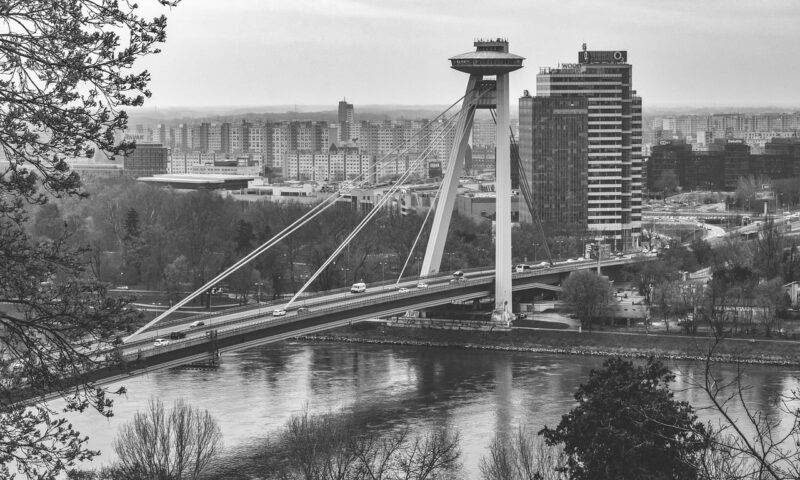Unveiling the Future of Transportation: 10 Revolutionary Changes You Didn’t See Coming
November 17, 2024

The world of transportation is on the brink of unprecedented transformations, driven by advancements in technology, sustainability initiatives, and changes in consumer behavior. From electric vehicles to advanced public transit systems, the future promises a radical shift in how we travel, live, and connect. In this article, we will explore ten revolutionary changes in transportation that are set to redefine our mobility landscape in the years to come.
1. The Rise of Electric Vehicles (EVs)
Electric vehicles have emerged as a cornerstone of the future transportation landscape. With the growing concern over climate change and the depletion of fossil fuels, EVs are becoming more popular. Governments worldwide are introducing programs to encourage the adoption of electric vehicles, including tax incentives and infrastructure improvements.
As battery technology advances, range anxiety—worries about running out of charge—will diminish. Major automakers are committing to electric lineups, paving the way for an electric future.
The environmental impact is profound; as more EVs enter the market, emissions from the transportation sector could decrease significantly, contributing to cleaner air and a healthier planet.
2. Autonomous Vehicles: Redefining the Driver
The advent of autonomous vehicles (AVs) will revolutionize transportation by eliminating the need for human drivers. Companies like Waymo, Tesla, and Uber are investing heavily in self-driving technology.
Imagine a world where commuting becomes significantly safer and less stressful with AI algorithms managing traffic and road conditions. With advancements in sensors and machine learning, AVs are projected to reduce accidents caused by human error, which accounts for over 90% of traffic incidents today.
Additionally, the adoption of AVs may lead to more efficient use of roadways, potentially reducing traffic congestion and travel time.
3. Smart Public Transportation Systems
As urban populations grow, smart public transportation systems will become vital in reducing traffic congestion and pollution. Innovations like real-time tracking apps, contactless payment systems, and integrated transport networks will make public transport more user-friendly and efficient.
Cities like Singapore and Helsinki are already leading the way with smart transit solutions. These systems allow commuters to plan multi-modal trips, integrating buses, trains, and bike shares seamlessly, providing a holistic travel experience that minimizes reliance on cars.
4. The Role of Urban Air Mobility
Urban air mobility (UAM) is poised to become a game-changer in how we think about transportation. The concept involves using small, urban air vehicles like drones and air taxis to navigate through congested urban spaces. Companies like Uber Elevate and Volocopter are exploring the possibilities of short, on-demand air travel.
While this technology is still in the early stages, with various regulatory hurdles to clear, it offers the potential for traffic-free commutes, significantly reducing travel times in city environments.
5. Hyperloop Technology: The Speed of Sound
Hyperloop technology, popularized by Elon Musk, promises to revolutionize long-distance travel. By utilizing a system of near-vacuum tubes to transport pods at speeds exceeding 700 miles per hour, hyperloop systems could reduce travel time between major cities to mere minutes.
Countries around the world are testing hyperloop concepts, with routes proposed between cities like Los Angeles and San Francisco. Although potential safety concerns and immense infrastructure costs pose challenges, the future of high-speed travel is genuinely exciting.
6. Sustainable Transportation Initiatives
Sustainability is at the core of future transportation advances—a trend already visible in the rise of renewable energy sources to power transport systems. Many cities are investing in infrastructure to support cycling and walking as viable options for everyday transport, creating healthier, more connected communities.
Electric public transit options like battery-operated buses and trams are becoming the norm, complementing efforts to reduce greenhouse gas emissions. Cities like Amsterdam and Copenhagen serve as shining examples of transformative initiatives that prioritize environmental responsibility in transportation.
7. Blockchain for Supply Chain Transparency
Blockchain technology is increasingly finding applications in transportation, particularly within supply chains. By providing a transparent, secure, and decentralized ledger, blockchain can enhance the efficiency and reliability of transporting goods.
Every part of the transportation process—from sourcing materials and tracking shipments to final delivery—can be recorded on a blockchain, reducing fraud and increasing trust among parties involved. This innovation could lead to faster shipping times and lower costs.
8. Mobility as a Service (MaaS)
Mobility as a Service (MaaS) will reshape our perspective on urban transportation. Instead of relying on private vehicle ownership, MaaS integrates various transportation services into a single accessible platform. Users can access shared vehicles, taxis, buses, and bikes through a single app, planning daily routes efficiently and conveniently.
Cities like Helsinki are leading the charge in adopting this new framework, encouraging users to shift their mindset towards sustainable and shared mobility options.
9. The Growth of Micro-Mobility Solutions
Micro-mobility solutions like e-scooters, e-bikes, and shared bicycles are redefining short-distance travel in urban areas. These small, lightweight modes of transport offer a convenient and environmentally friendly alternative for commuting, reducing traffic congestion and lowering emissions.
Cities worldwide are adding infrastructure such as bicycle lanes to support the growth of micro-mobility, making it easier and safer for people to choose these options for their daily commutes.
10. Connectivity and Smart Roads
The future of transportation includes the concept of smart roads—roadways equipped with advanced technology to communicate with vehicles and regulate traffic flow. Through the use of IoT devices and sensors, smart roads can minimize traffic jams, increase safety, and optimize fuel efficiency.
For instance, real-time data on traffic conditions can be relayed to drivers, advising them of route adjustments to avoid congestion. Vehicle-to-everything (V2X) communication will improve interactions between vehicles and infrastructure, enhancing overall transportation efficiency.
Conclusion
The future of transportation is rapidly evolving, driven by innovative technologies and a growing commitment to sustainability. As we embark on this journey towards a more robust and integrated mobility framework, it’s essential for businesses, governments, and individuals to adapt to these changes to reap the benefits of a more efficient, safer, and greener travel environment.
By embracing these revolutionary changes, we can work toward a future where transportation is not just a means to an end, but a seamless extension of our lives, enhancing our connectivity while protecting our planet.




